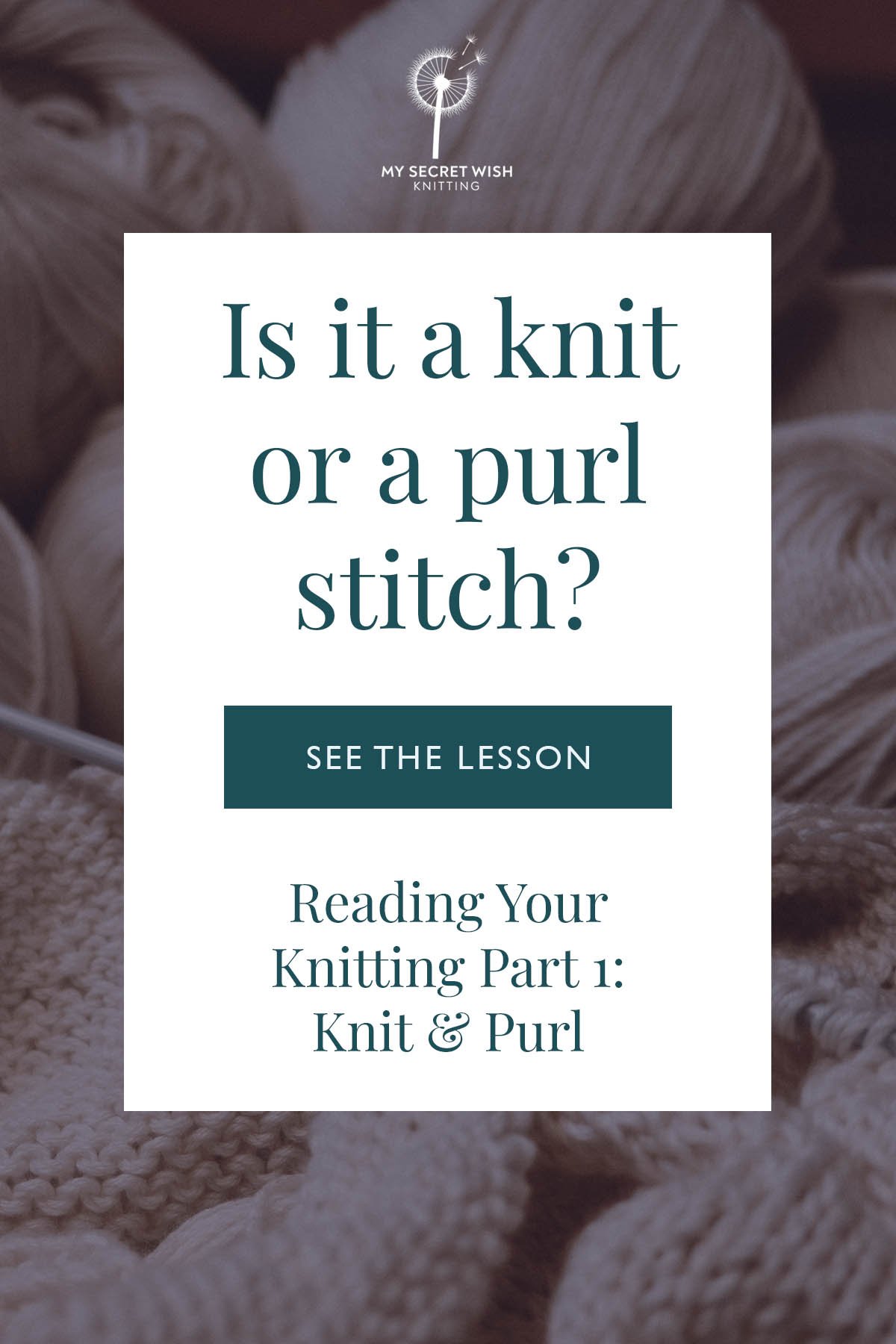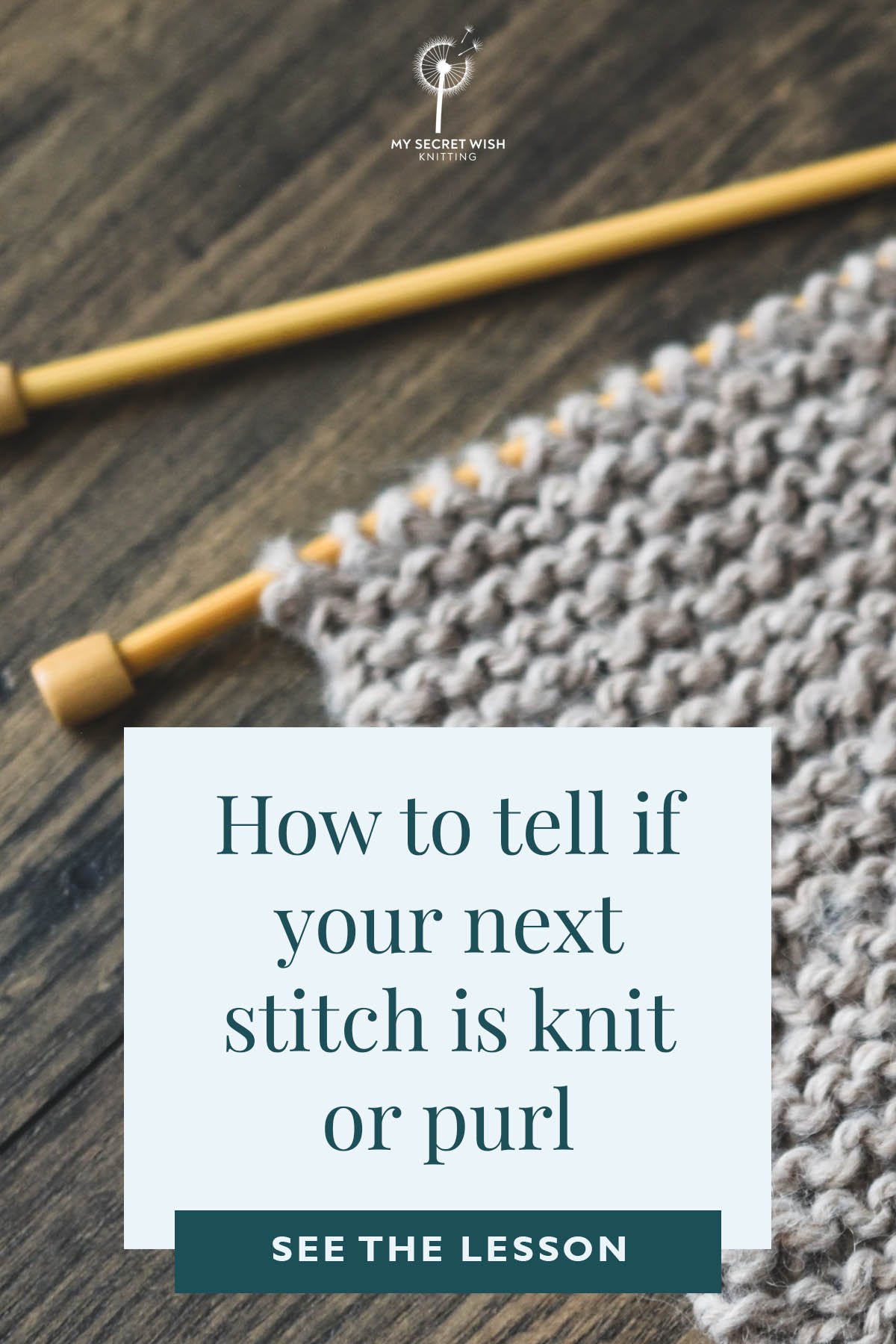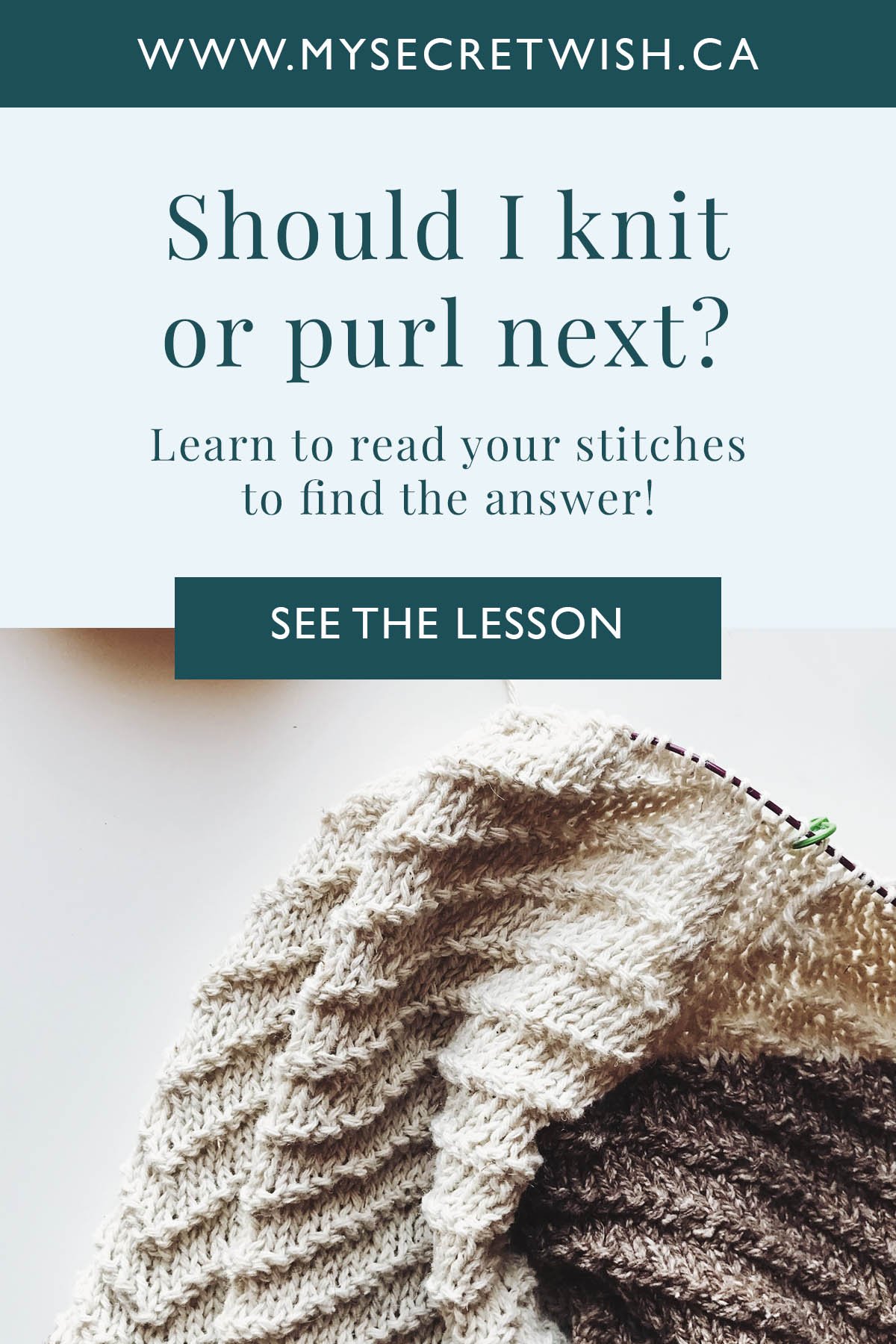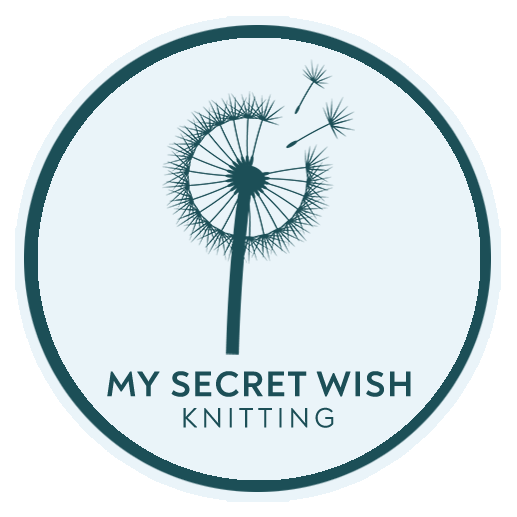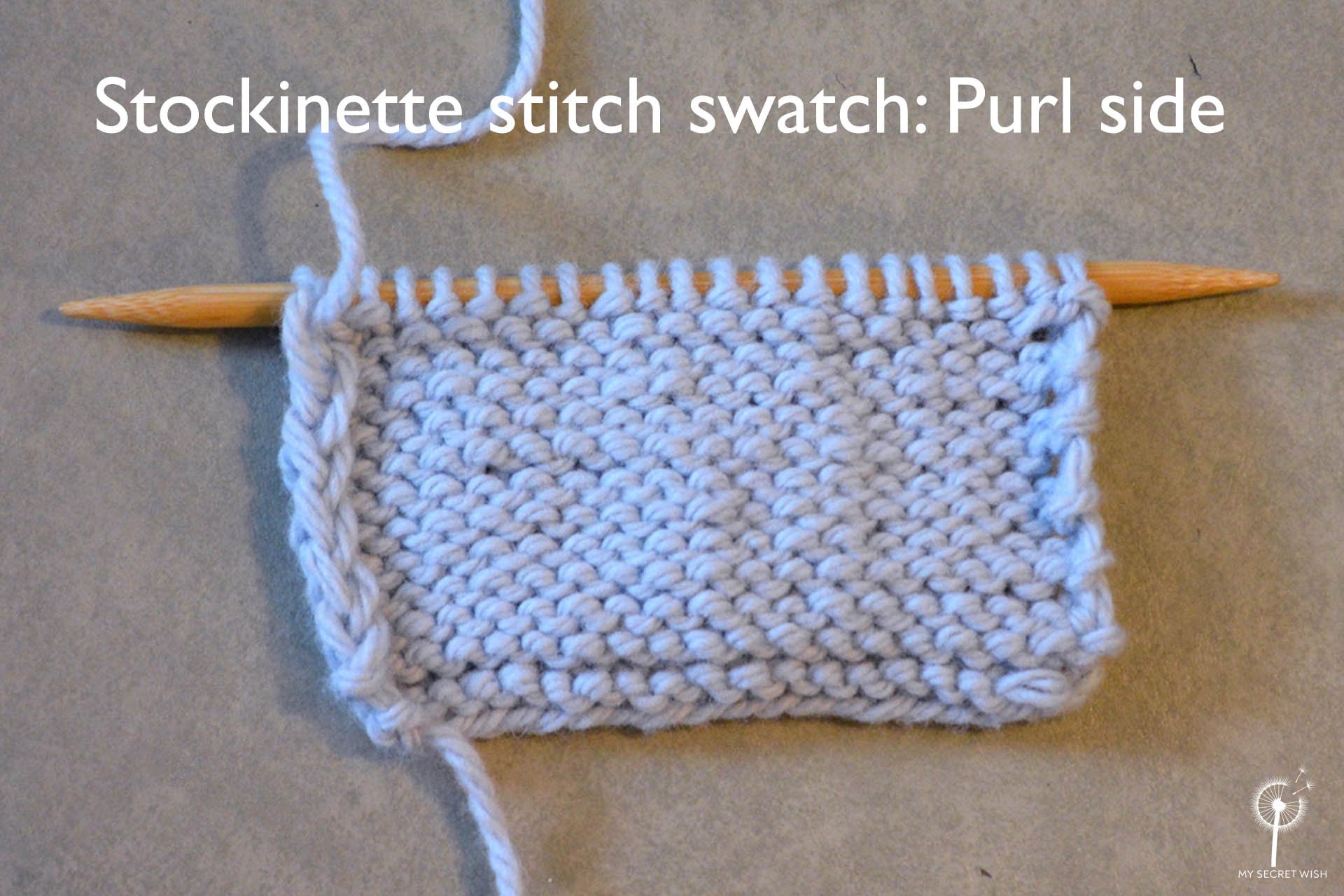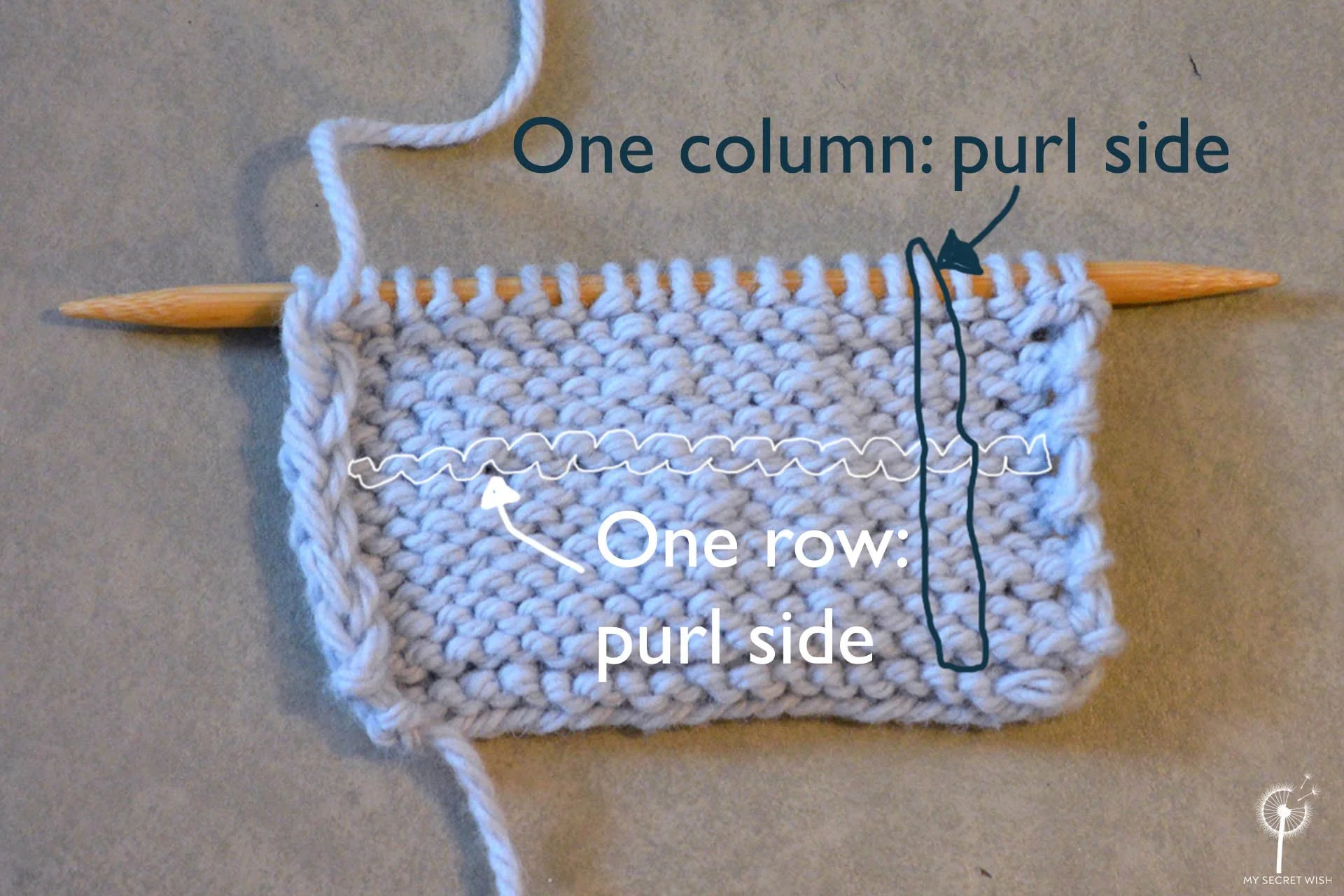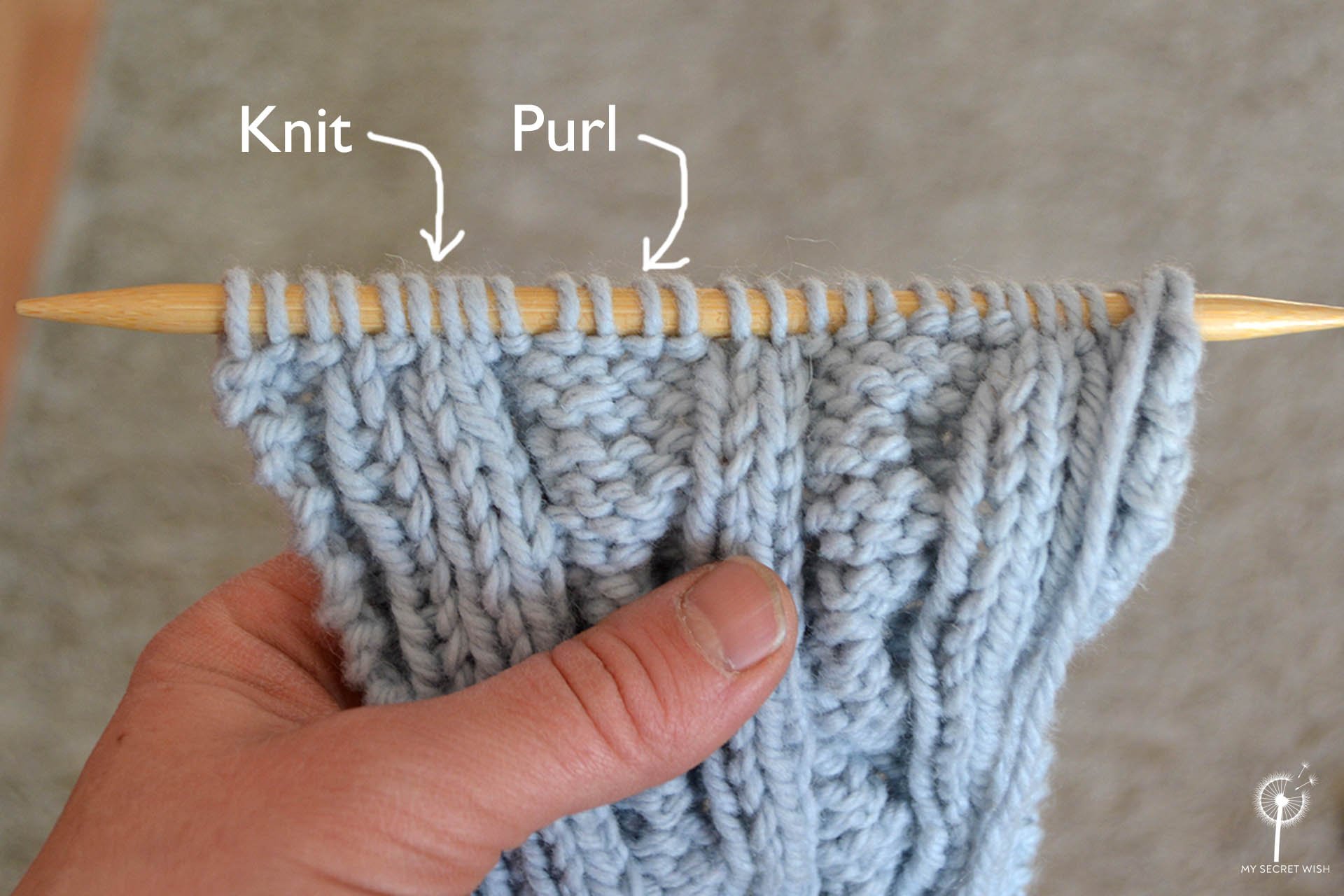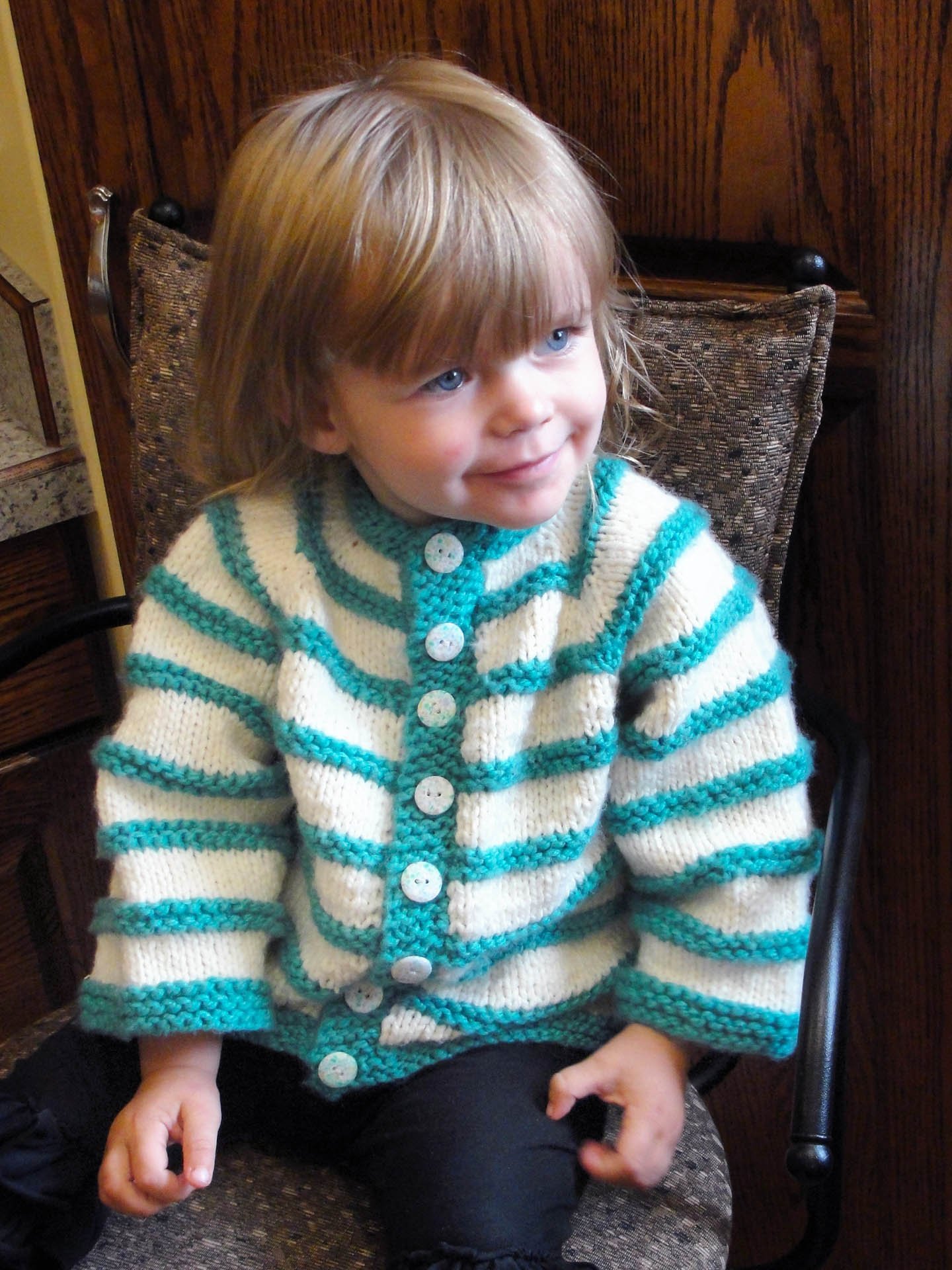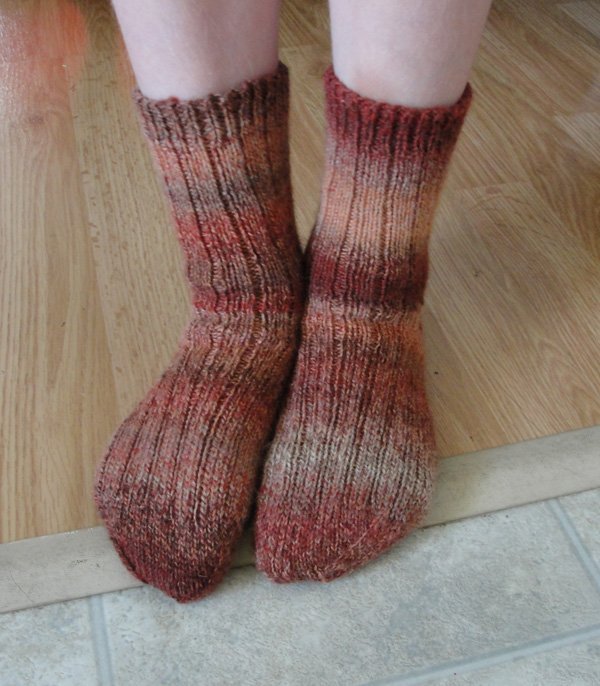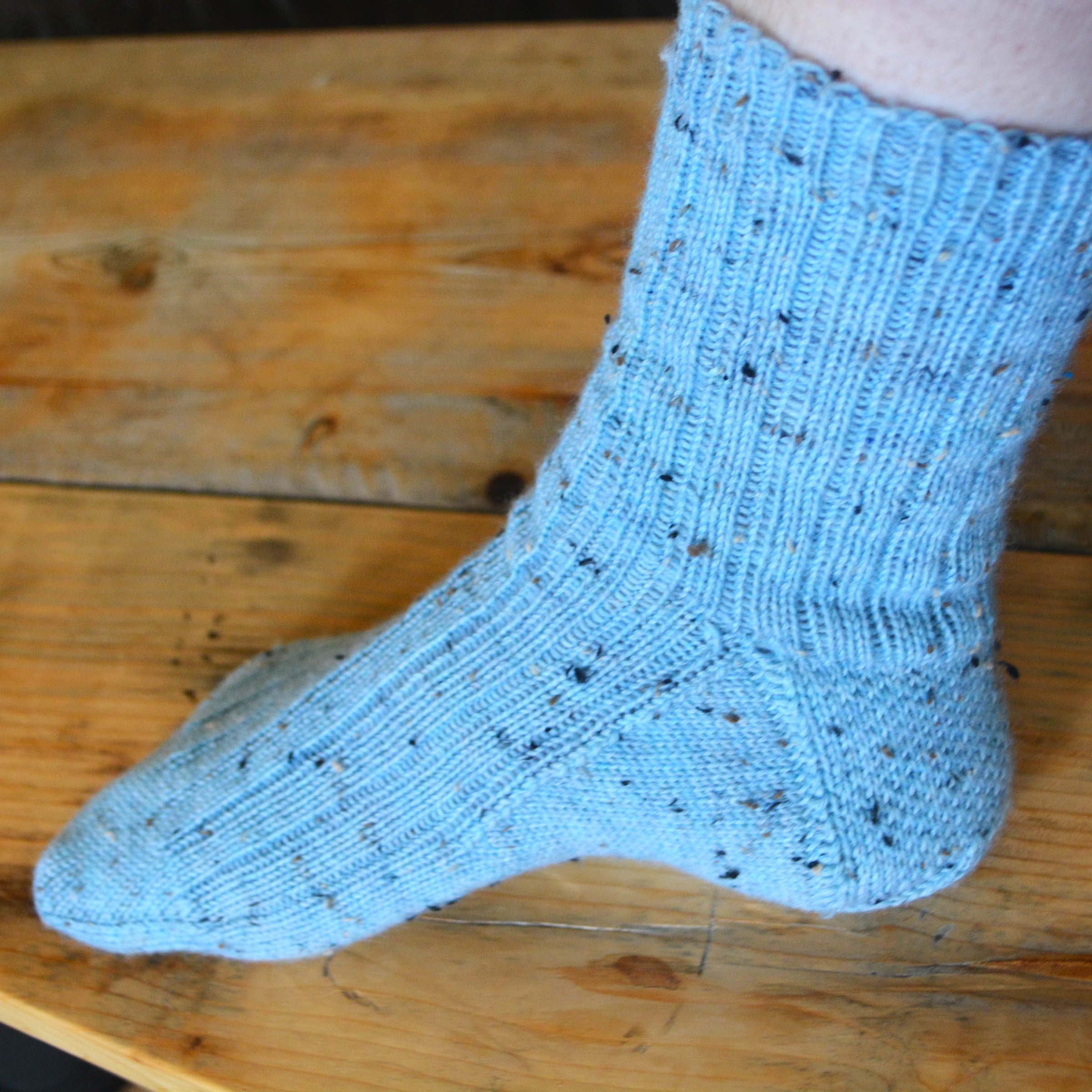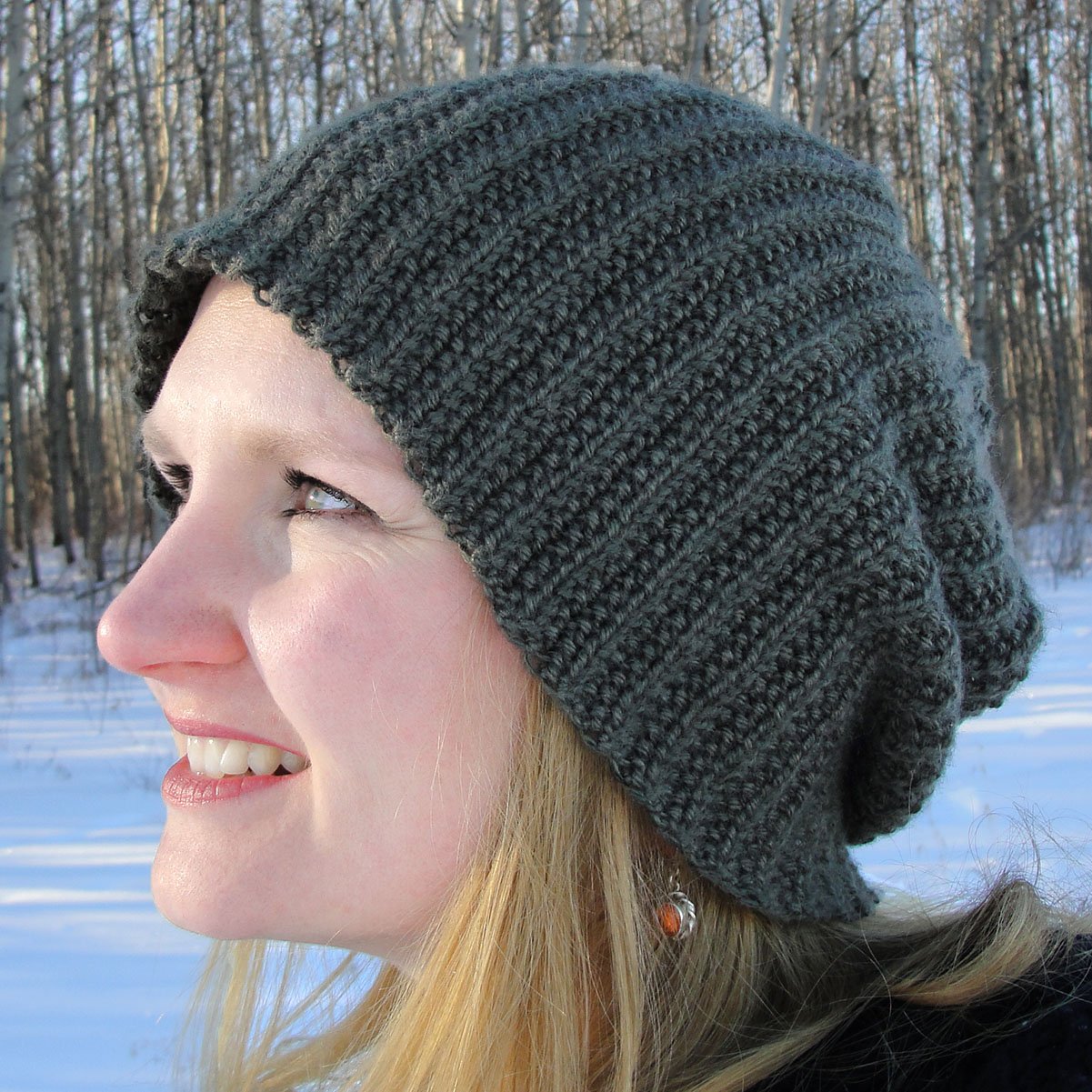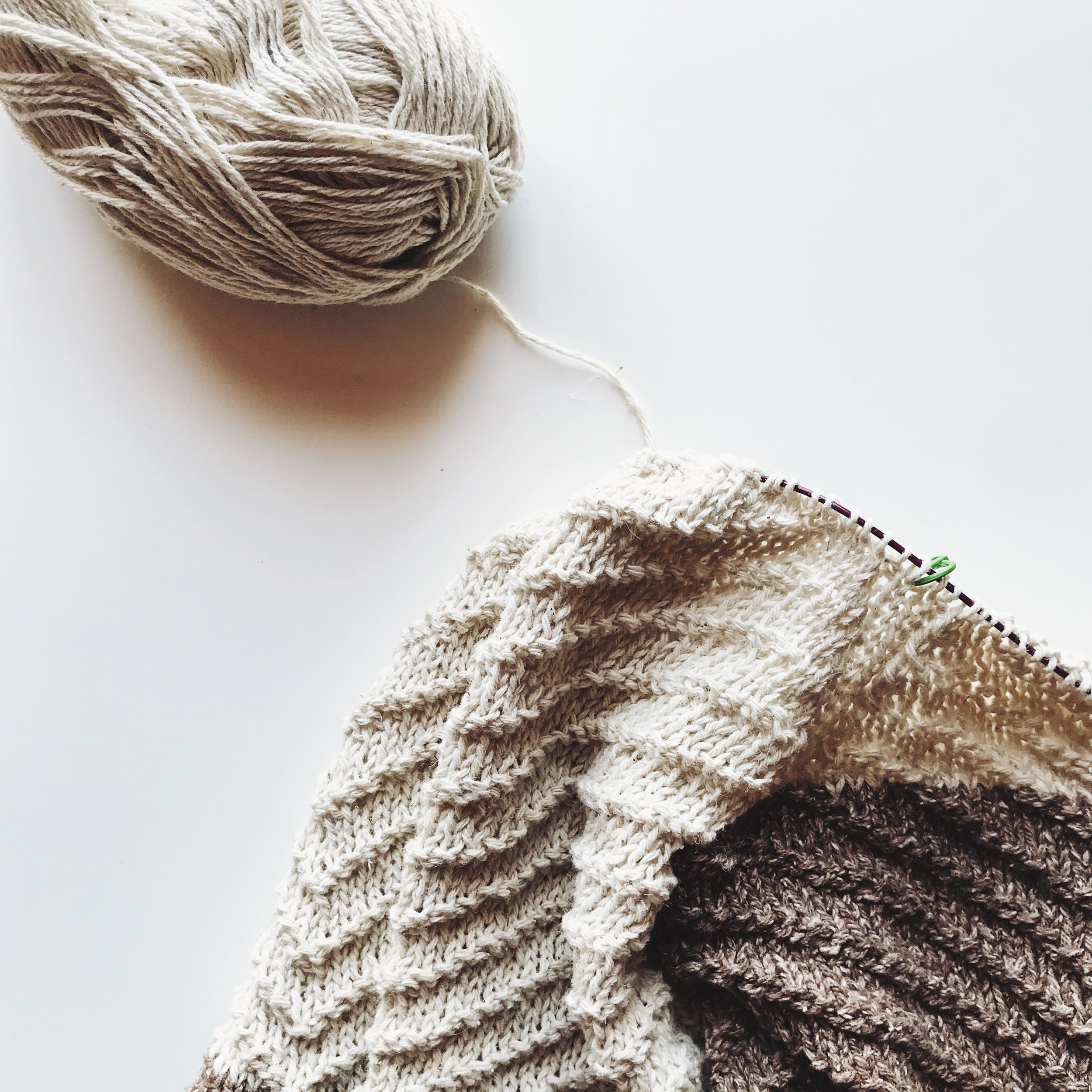
Reading Your Knitting 1:
Understand Knit and Purl
Become stitch savvy and start knitting better today.
One of easiest ways to improve your knitting is learning how to “read” your work, thus preventing mistakes or noticing them sooner. When you can tell the difference between a knit and a purl stitch, you’ll know what you’ve just worked—and what stitch comes next. I can’t overstate the importance of becoming knitting literate to improving your craft.
Do I still make mistakes? Yes. But that is usually because I am knitting while binge-watching Gilmore Girls, working a fancy cable in the round, and trying not to burn my mouth on my tea. When I'm paying attention to my work, I rarely do. (Make mistakes, that is. The mouth-burning? Eh.) The good news: you can learn how to do this, too.
(Side note: If I AM going to make a mistake, I try to make it a good one—like a dropped stitch 35 rows back that only just now became noticeable as I am working the decreases. Or crossing a cable the wrong way, half a section down. Sometimes these can be fixed. Sometimes the work has to be ripped out. More on the fixes—and the difference—later.)
Just to make sure I don't miss anything, we are going to start at the VERY BEGINNING.
What the Purl is a Stockinette?
When you start anything new, there's all this lingo—at this point, I am going to assume you already know how to make a knit and a purl stitch. If not, take a few minutes to toodle on over to the How to Knit section of my site and find out.
(If this really is your first venture into knitting at all, I recommend beginning with the Continental-style tutorials. Continental knitting holds the working yarn in your left hand instead of your right. This style requires less movement of your hands, and can therefore be much faster and less stressful on your joints once you get the hang of it. I may create my own videos at some point, but there are so many great tutorial videos out there already. And this page is about reading your knitting, not teaching you how to do it. If you are looking for how to knit, go check out my free, comprehensive How to Knit tutorial.)
What I have found with beginner knitters is that although they may know how to make the stitches they still can't recognize them.
I am going to show you the difference between knit and purl using a swatch in stockinette stitch. Stockinette simply means that you will knit every row on one side of the work, and purl every row on the other. If you are knitting in the round, as long as you just knit, then you naturally create stockinette stitch.
Stockinette stitch swatch: knit side. Notice the columns of Vs and the smooth look of the fabric.
You can see how the knit side of stockinette looks like a bunch of nested Vs, or like little chevrons. At the bottom of this swatch, I did three rows of garter stitch—that means that I knit every row. (I start and end my swatches in garter stitch, as it helps the swatch to lay flatter. Stockinette naturally curls to the purl side.)
The knit side also tends to look like columns going up and down, which is all of your stitches sitting neatly on top of each other in their lovely connected loops. The rows are trickier to see because of the ups and downs of the chevron-shaped stitches. (When counting stitches in a gauge swatch, you want to lay your ruler straight across one of these rows and count the columns within your required measurement.)
Column and row on the knit side.
The purl side looks like a bunch of little bumps all in rows. If you look closely, you can see that each row you knit actually creates two staggered rows of bumps that alternate with each other.
This side is also referred to as reverse stockinette.
Stockinette stitch swatch: purl side. Notice the ridges of bumps that look like little offset bricks.
The columns are there, too, but they are harder to see on this side. You have to choose a bump on either the top or bottom part of a row and follow all the bumps stacked directly on top of it to see the column of stitches. (When you count rows for a gauge swatch, you want to line your ruler up straight along the column and count these bumps.)
Column and row on the purl side.
Have you ever set down your work for a minute, and when you come back to it, you’re not sure where to start, or what you should be doing next?
Well, if you’re a right-handed knitter, at the beginning of a row, your needle with the work on it will be in your left hand. Look at your first stitch. Is it a knit or a purl stitch? Chevron or bump?
Sometimes it can be a little hard to tell what the first stitch is, as they tend to be a little loosy-goosy. (In my swatch above, I actually slipped the first stitch of every row, which means I just moved it from one needle to the other without working it. This helps tighten up the edge a little.)
Well, here's another way to tell. If you are working in stockinette stitch and your working yarn is coming from the back of the needle, you should knit. If it is coming from the front of the needle, then you should purl.
Yarn in back: time to knit!
Yarn in front: time to purl?
Of course, if you are working a stitch that changes what you are doing every row or two (for instance, seed stitch or moss stitch), then you can still use these clues to help you figure out what your last stitch was—and do the opposite.
So, to sum up, this is how you recognize knit and purl stitches:
Knit - looks like a chevron or a V, stacks up in columns, yarn comes off back of needle
Purl - looks like bumps, lines up in horizontal rows, yarn comes off front of needle
So if you are working a stitch where you are working knits and purls in succession, you know how to tell them apart now, right? Ribbing, here you come!
Recognizing alternating columns of knit and purl stitches.
In my next Reading Your Knitting tutorial, I will be talking about how to catch and fix “wrong stitches” and other knitting mistakes.
Happy knitting!
Try our patterns:
